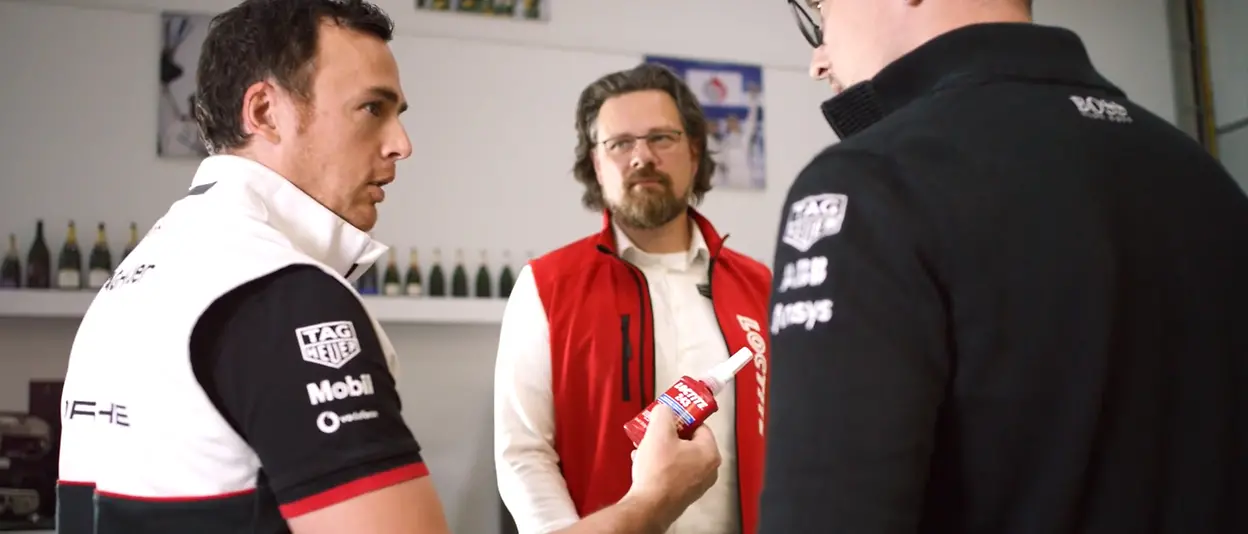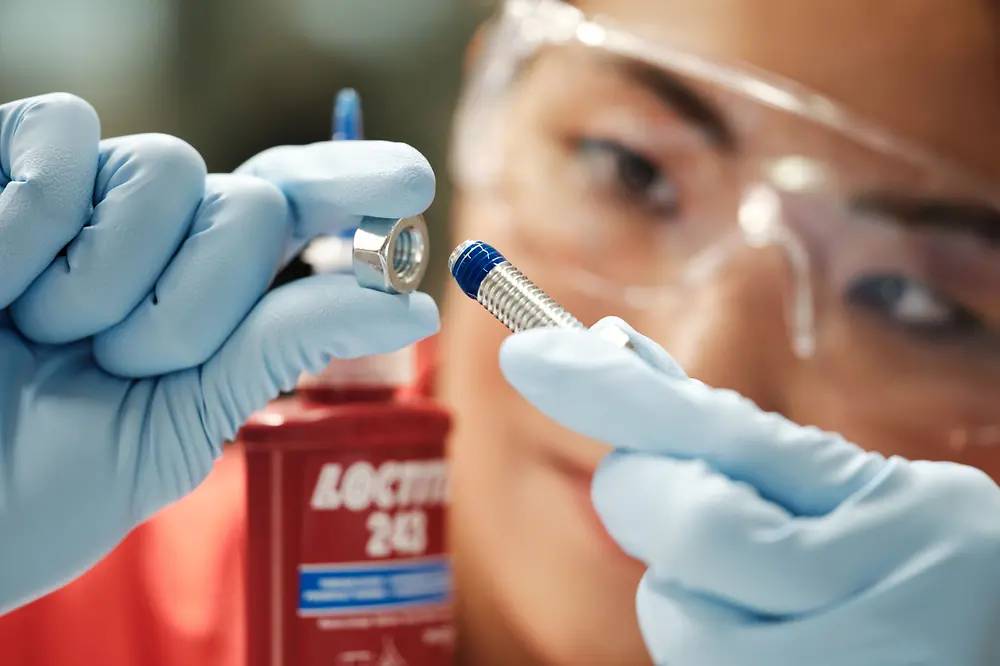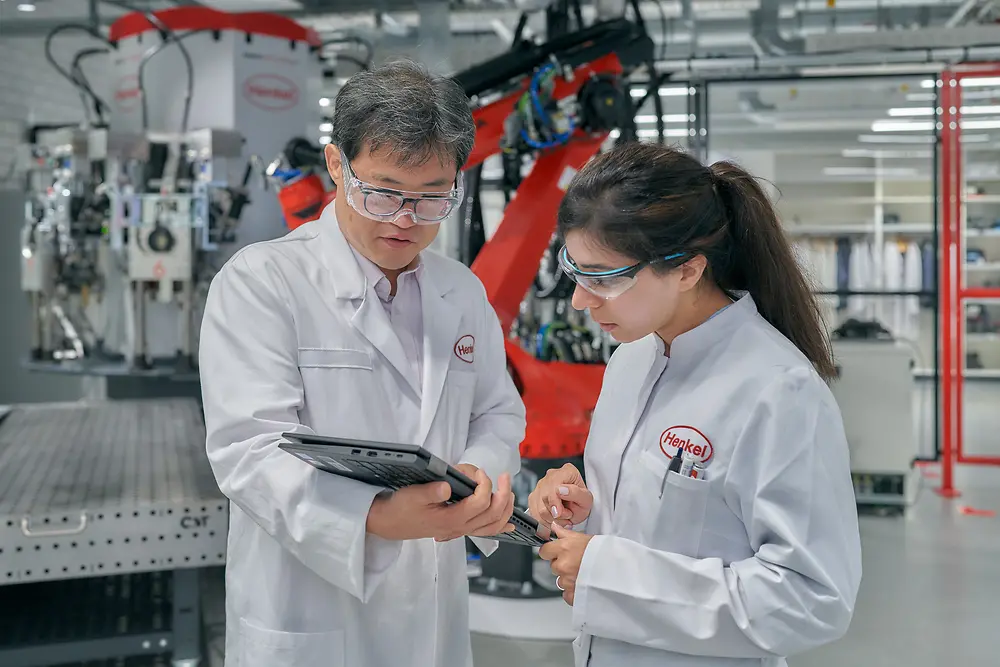Learn more about Henkel Brands & Businesses in UK & Irelands: Includes useful information about the brands, technologies and latest innovations in our business areas: Henkel Adhesive Technologies and Henkel Consumer Brands.
Top-class performance for a top-class sport
Almost without sound, yet quick as lightning, the Formula E race cars go whizzing around the track. The current season may have come to an end in July, but preparations are well underway for season 10 of the ABB FIA Formula E World Championship, which will start in January 2024. And once again, a large number of Loctite products will play their part in this racing class. Henkel Adhesive Technologies, with its Loctite Brand, has a close partnership with the TAG Heuer Porsche Formula E Team. Martin Christall is an Application Engineer at Henkel and is responsible for the collaboration project. Here, he gives us a glimpse of the fast-paced world of e-racing with its extreme loads and sophisticated engineering.
It was the year 2021. Not many knew what Martin Christall, Application Engineer at Henkel Adhesives Technologies, would work on. The collaboration between the TAG Heuer Porsche Formula E Team and Loctite was not publicly known, and Martin Christall had just joined Henkel. But fast cars have always played a major role in his career, starting with his time in the automotive industry and then in Formula 1. And now, Formula E was to become one of his career's most exciting and challenging projects.
In the fall of 2021, Martin Christall and a colleague traveled to Weissach, half an hour from Stuttgart, Germany, to meet with the Formula E team. Their job that day was to carry out the most important part of this collaboration: to identify possible points of use where Loctite could further improve the performance and reliability of the team’s electric race car. That in itself promised to be a challenge. While vehicles like this consist of several components that require bonding, some of the parts must conform to the specifications set out by Formula E. The chassis, battery, aerodynamics, and front suspension are provided centrally and are the same for all teams. This means there is only a certain amount of leeway when it comes to incorporating a team’s technologies and components, for example in the engine, transmission, rear suspension, and control systems.

The design of the car’s front motor raised some assembly challenges for the team, and one of our adhesive products fulfills all requirements. Loctite 9466 adhesive worked amazingly on the first try. This created trust and was a good basis for our further collaboration project.
Martin Christall, Application Engineer at Henkel Adhesive Technologies
“But that day, we managed to win the team over with one of our first demonstrations,” Martin Christall recalls. “We needed to find the best way to assemble parts of the front motor which is part of the energy recovering system for recharging the battery when braking during the race. The design of the car’s front motor raised some assembly challenges for the team, and one of our adhesive products fulfilled all requirements. Loctite 9466 adhesive worked amazingly on the first try. This created trust and was a good basis for our further collaboration project.”
Today, the teams work closely together to get even more out of the cars of the future. Their shared goal is to develop even better ways of using Loctite products, while also testing new products that enhance the car’s performance, speed, and sustainability. Already, different Loctite solutions are used to ensure mechanical reliability for a host of key applications, which extend from suspension bearings, gearbox housing parts, and powertrain bolts to steering wheel components.
Loctite – made for challenging projects
When Martin Christall joined Henkel, he was new to the adhesives business. Nevertheless, he immediately felt at home. This is hardly surprising, as he had already come into contact with Loctite during his time in motorsports. He recalls a situation in which he and his team at the time were bonding engine parts together. In motorsport everything is super quick, so you need assembly to be fast and precise. After the race, you see the results, and Loctite bonding solutions never disappoints the team. This experience convinced him of the reliability of Loctite.
Today, this conviction serves him and his team well when working with the engineers at TAG Heuer Porsche Formula E Team to find the best point of use for the wide range of Loctite products. In Formula E, adhesives are exposed to extreme loads. A high-performance electric motor with an output of 350 kW can propel the 854-kilogram race cars to 100 km/h in 2.8 seconds. The current generation can reach top speeds of up to 320 km/h. “Braking is done with pure motor power, to recharge the battery, reducing the need for additional break, required only for safety reasons”. Martin Christall explains as he enthusiastically describes the sophisticated work of the engineering teams. “This puts a huge strain on all the parts. On top of that, there are the high temperatures, continual shock, and vibration to deal with.”
The products are highly durable. What is special in this case is that many of the adhesives used are available to consumers.
Delivering Loctite straight to the racetrack
Sometimes, it is the small challenges that require creative solutions. For example, the Henkel team was faced with the simple question of how to get their Loctite products to the racetrack, as Formula E regulations stipulate that no adhesives or cleaning agents may be transported in the containers. Any items required are purchased locally by Formula E. And in general, little attention is paid to the brand.
Martin Christall and his team set out to change this: “What we did was send product samples straight to the racetracks in Cape Town, Berlin, and Rome. This was very well received, because it meant that the engineers on site were able to continue working with the products, they had a positive experience with – and in the use of which they had been trained. After all, we put a lot of work into education and training.”

Current electric cars are still very heavy – mainly due to the weight of the battery. So, the goal now is to reduce weight while ensuring stability. That’s where adhesives play a big role.
Martin Christall, Application Engineer at Henkel Adhesive Technologies
Formula E: Loctite team collaborating on the development of new cars
Just like Formula 1, Formula E is a showcase of outstanding engineering. It is here that new technologies are tested that will shape the future of the automobile. The goal is clear: to get the most out of this technology – in a way that is sustainable, emission-free, and meets the highest standards.
“Current electric cars are still very heavy – mainly due to the weight of the battery,” says Martin Christall. “So, the goal now is to reduce weight while ensuring stability. That’s where adhesives play a big role.” When it comes to e-mobility in general, it is crucial to develop ways that ensure safe and efficient battery performance. Hence, our experts at Henkel Adhesive Technologies continuously work on solutions for adhesives, sealants, and functional coatings that improve the batteries for electric cars. Whether it’s for the batteries’ thermal management, protecting them from corrosion and environmental influences like moisture or dirt, sealing the battery system, or bonding different lightweight materials – Henkel Adhesive Technologies plays a key role in battery assembly and safety for electric vehicles.
Martin and his team are included in the inner circle of development for the new generation of Formula E cars. However, the development phase of these new race cars is as secret today as the start of the project was back then. “We regularly visit the developers on site at Porsche test and development center, the home of Porsche Motorsport. They are already working on new cars that are scheduled to race in the 2026 season.” However, Martin Christall cannot and will not reveal any further information about the current development status. All he will say is this: These new cars will be taking a giant leap forward in terms of both performance and technology.
And this is another reason why he and his team keep going – and continue working on the future of mobility.
Loctite partners with TAG Heuer Porsche Formula E Team
INNOVATION
UNDERSTANDING CHANGE, SHAPING THE FUTURE
Every innovation starts with an extraordinary idea. But an idea is only the first step. A leap forward in innovation requires more. It takes an idea that excites – the market, consumers, or our customers. The key to sustainable growth and prosperity are innovative products and technologies that address challenges, bring about change and achieve visions.











